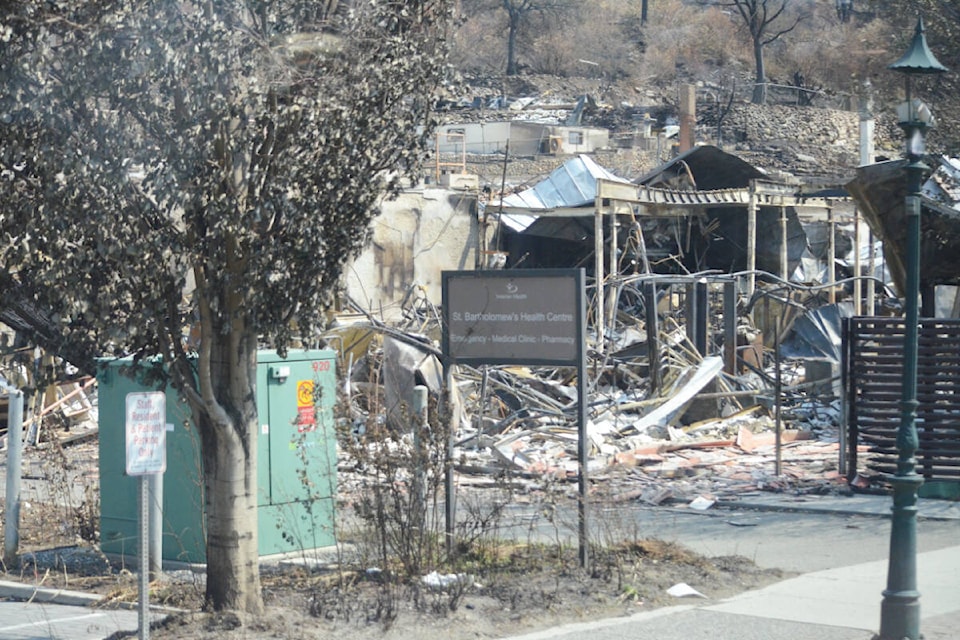An online community meeting for Lytton residents on Feb. 24 took place 239 days after the fire that devastated the community, noted Mayor Jan Polderman, who said that it has been a long, challenging, and complex journey with many obstacles. “However, each day we persevere and continue to make strides towards recovery.”
Residents learned more about what the rebuilding process will look like and some of the timelines. Polderman said that on Feb. 23, the village directed BC Hydro to build an overhead, like-for-like distribution system at no cost to the village or its residents.
BC Hydro’s electrical infrastructure in Lytton was completely destroyed by the fire on June 30, 2021. A BC Hydro spokesperson said that the infrastructure would be rebuilt to what it was before the fire, a process expected to take between six and nine months.
Residential customers will be connected at no charge if their connection fee is not covered by insurance. Commercial customers will need to pay a reconnection fee, and all customers wanting reconnections will need to hire a certified contractor and get all appropriate approvals from the village and Technical Safety BC.
TELUS has been able to remove debris from the village, and will soon be starting work on clearing fallen wires. Plans have been drawn up, and TELUS estimates that phone service will be restored sometime this fall if everything goes according to plan.
Safe return and re-entry was discussed, with a rundown of the state of highway corridors in the area. Ongoing slide activity on Highway 12 between Lytton and Lillooet is being monitored, with the intention of keeping the route open as much as possible.
Project manager James Heigh said that debris removal is moving forward, adding that information about the heritage component is being finalized, and a community message about the process is almost ready to be sent out by the Kumsheen Heritage Committee. It will provide more clarity about the process, which Heigh explained is about heritage conservation. An archaeological permit is being developed that will expedite the process for homeowners looking to do work on their property.
Heigh said that debris removal would consist of removing surface items, stripping out contaminated soil, and demolition and removal of foundations and structures. The Kumsheen Heritage Committee would determine whether or not cultural monitoring was required. Known archaeological sites, as well as chance finds, would be identified and require additional permitting. Rebuilding activities — such as new foundations, structures, or utilities — will also be subject to these heritage/cultural monitoring regulations.
Lisa Zetes-Zanatta of Interior Health noted that health care services are slowly returning, and that two physicians have expressed interest in providing services to the community and surrounding area. A spokesperson for the First Nations Health Authority outlined the health services in place for First Nations residents of the area, and all residents were reminded of the services being provided by the resiliency centre, which is being run by Emergency Management BC at Kumsheen ShchEma-meet School.
The RCMP has secured a lease with Lytton First Nation and is planning a temporary detachment — hopefully in late spring — on the former health care site on Main Street.
The session was followed by questions from the public, with several people asking about how to ensure the railways clean up their properties. There was no clear answer, as railways are federally mandated and cannot be compelled by either the village or the Province.
A resident noted that many insured residents are finding that they are under-insured in terms of rising rebuilding costs and the added cost of the archaeological assessment, which is leading to more uninsured people. She also noted that as a Lytton resident who lost a business but not a home, she has been told by the Red Cross that a lot of supports available to residents who lost homes — such as mental health supports for her five-year-old daughter — are not available to her or her family. A Red Cross representative asked the resident to be in touch with her for follow-up on mental health services.
Another resident noted that some of the recent provincial grant of $8.3 million, announced in February, was earmarked for water and sewer services, and asked what the issue was with water and sewer, as those services are underground. She was told that there is still a good deal that is not known about damage to/the state of underground services such as water and sewer, and that the damage cannot be properly assessed until debris removal has taken place.
Residents were also told that all debris removed has to be assumed to have asbestos and treated appropriately. Tests will be conducted to assess what exactly is in the debris so that it can be disposed of in the correct manner and at the correct rate at landfills.
editorial@accjournal.ca
Like us on Facebook and follow us on Twitter
